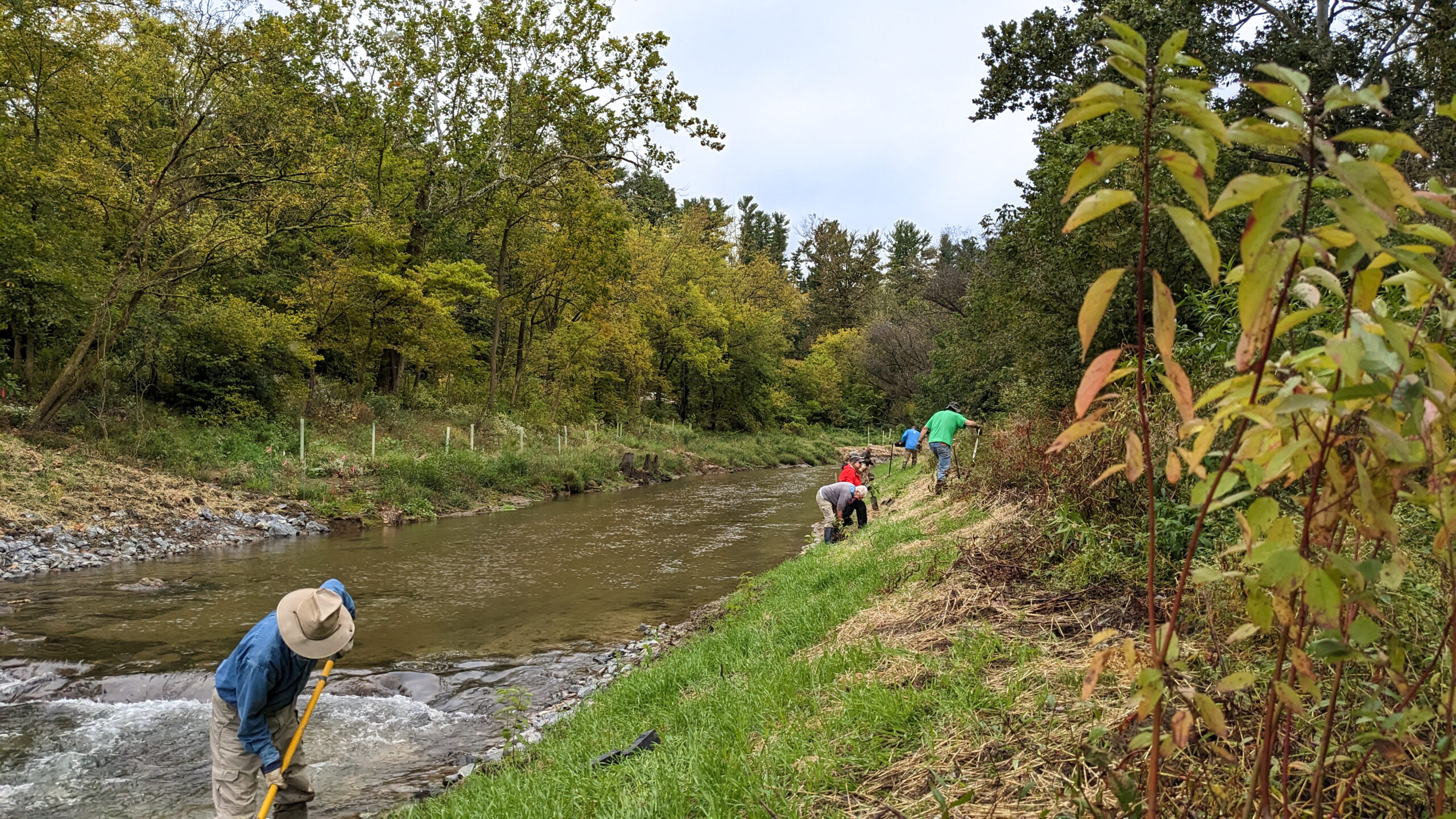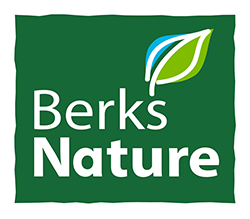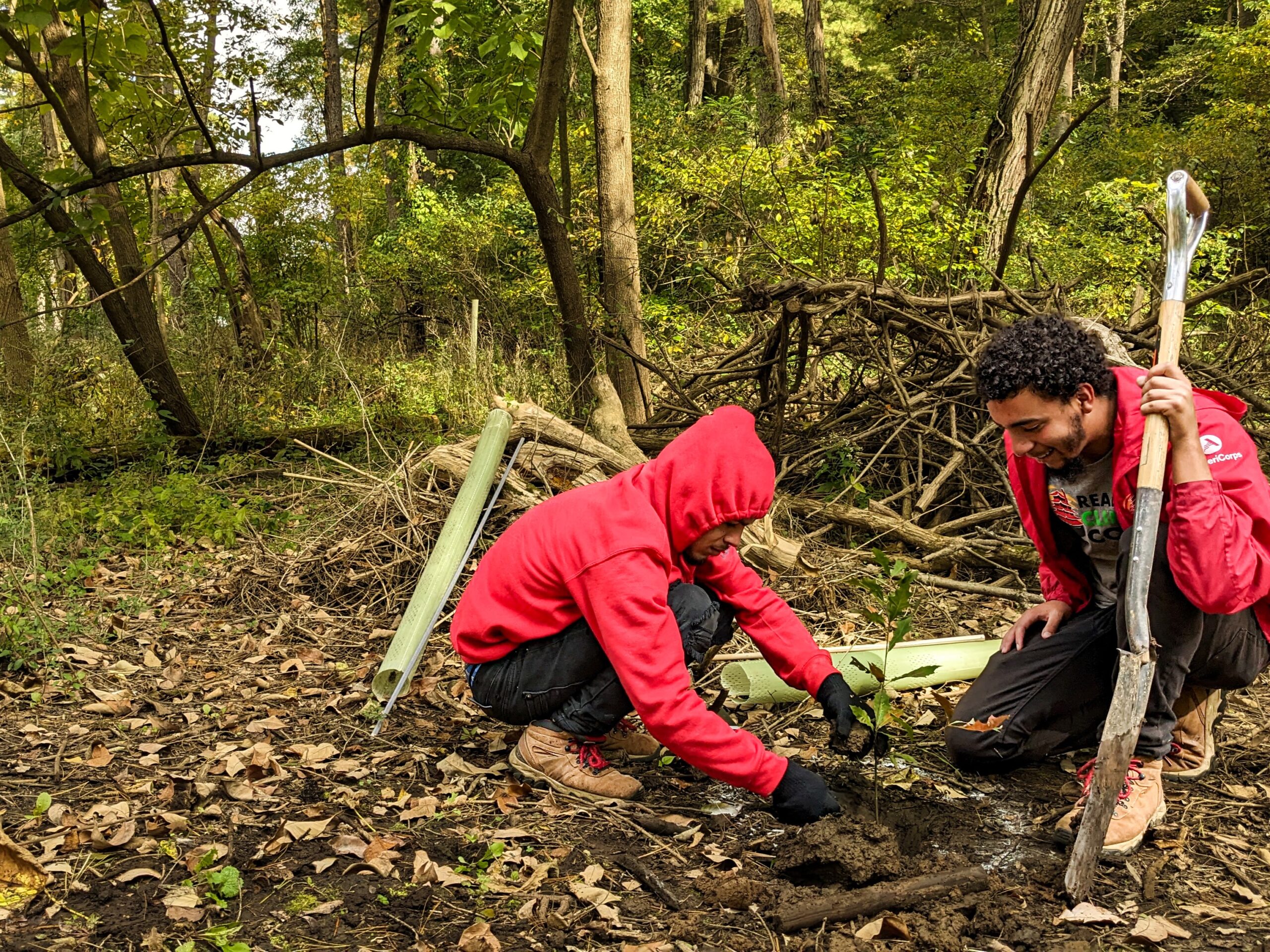For Berks Nature, this time marks yet again the tree planting season! The Land Team, along with other staff and numerous volunteers, are steadfast in working to complete the annual ritual of fall tree planting. By the end of the fall season, the number of trees and shrubs planted in 2023 will reach more than one thousand (read the rest of this newsletter for more details). By planting trees and shrubs, whether it be on public or private properties, we are not just caring for the land, we are making an investment for a better, more sustainable and climate resilient future.
– Andrew Fetterman, Vice President for Land and Conservation

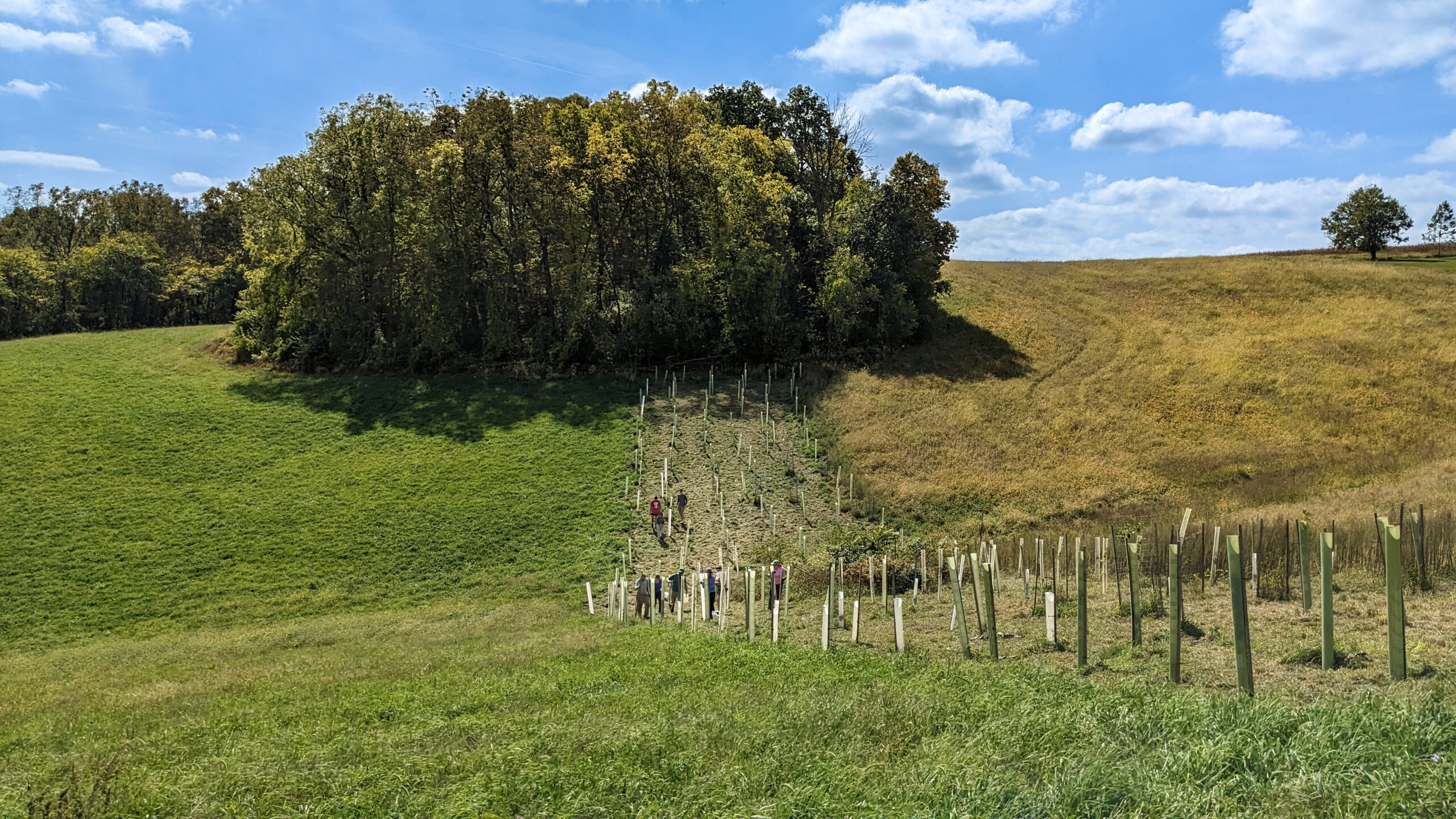
Volunteer Appreciation
Berks Nature Ambassadors
Tulephocken Creek Watershed Association
Trout Unlimited
Maiden Creek Watershed Association
Mid‐Atlantic Renewable Energy Association (MAREA)
Reading Climate Corps
Oley Cub Scouts
Tree Planting Stats (Fall 2023)
Angelica Creek Park: 30 trees and shrubs
Cacoosing Creek Floodplain: 140 trees and shrubs
(at the former site of the Van Reed Paper Mill Dam)
Schlegel Park: 10 trees and shrubs
Charming Forge: 100 trees and shrubs
(private property)
Bob’s Woods at the Earl Poole Sanctuary: 4 trees and shrubs
Fleetwood Middle School: 10 trees and shrubs
Kernsville Dam: 10 trees and shrubs
Governor Mifflin School District Campus: 9 trees and shrubs
Ontelaunee Heights Park: 50 trees and shrubs
(Maidencreek Township)
Fleetwood Forest: 3 trees and shrubs
Albany Township Park: 35 trees and shrubs
Neversink Mountain: 40 trees and shrubs
Total Trees Planted in Fall 2023: 441
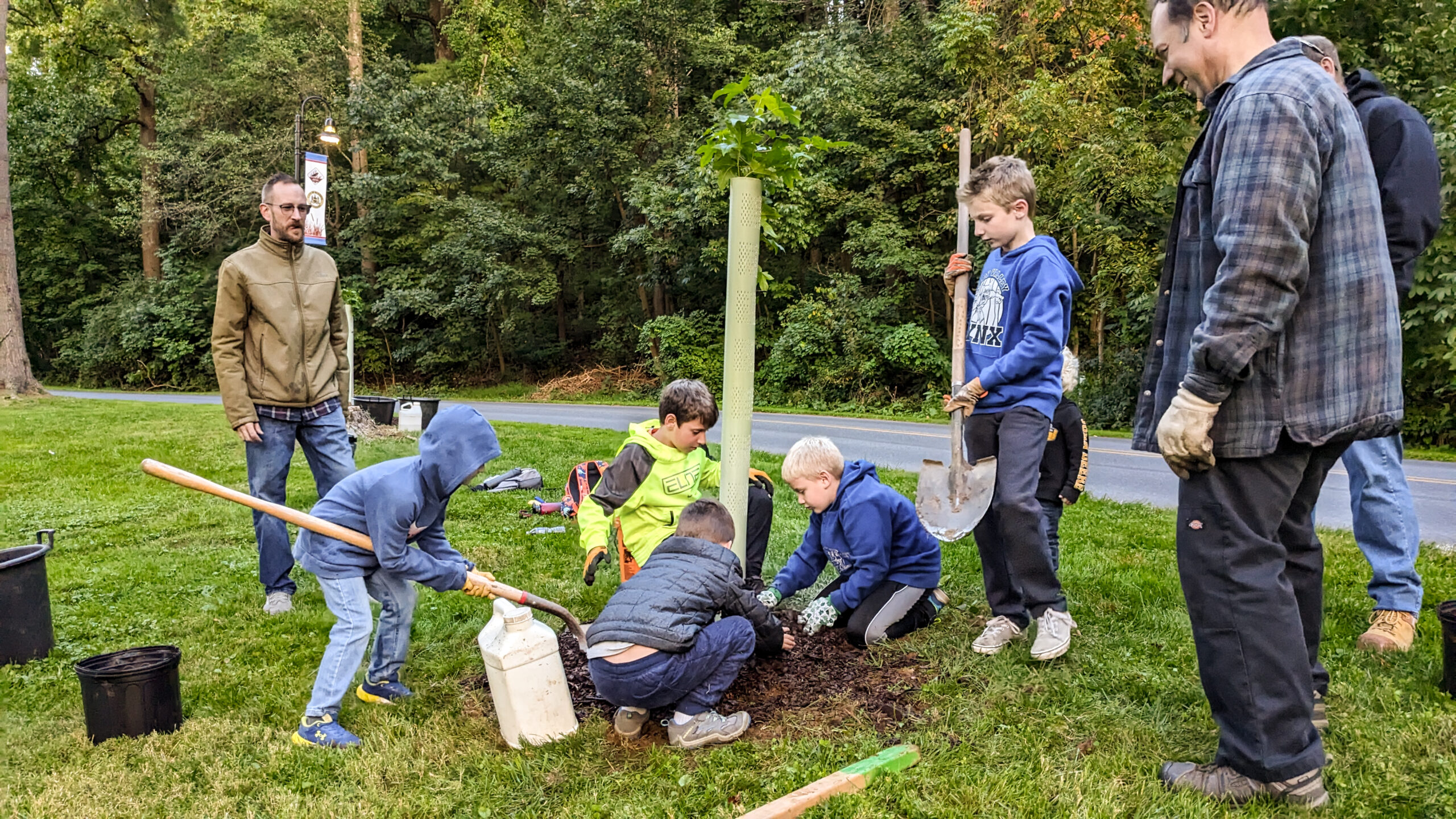
Healing Waters
The largest undertaking of Berks Nature’s fall tree planting season took place on the banks of the Cacoosing Creek, just over 500 feet upstream from its confluence with the Tulpehocken Creek, at the former site of the Van Reed Paper Mill Dam.
American Rivers broke ground on removing the Van Reed Paper Mill Dam over the summer of 2022. The Cacoosing Creek, like much of Pennsylvania’s landscape, was dramatically transformed during colonization of European settlers, who violently dispossessed the land from the Lenape, the indigenous inhabitants of the watershed, and installed industrial infrastructure to support timbering, agriculture, and the Civil War effort.
After serving its industrial purpose, the Van Reed Paper Mill Dam was abandoned and languished in a state of obsolescence. The Cacoosing Creek and its aquatic life deteriorated, buried under sediment built up behind the dam and impacted by impaired water quality caused by erosion, industrial spills, and polluted surface runoff. The dam also disrupted the watershed’s natural rhythm as each spring, trout gathered below the dam, blocked from proceeding along their ancient migratory route.
After centuries of abuse, the Cacoosing Creek was hurting and removing the Van Reed Paper Mill Dam offered healing. Once removed, water levels fell revealing the creek’s new path toward a healthier future.
Following the dam’s removal, Berks Nature, in partnership with American Rivers and Trout Unlimited, took to restoring the once submerged floodplain and the creek’s neglected shores. Invasive species that were disrupting the streamside understory were removed and, in October 2023, native trees and shrubs were planted to reinvigorate the natural plant community.
Volunteers from the Berks Nature Ambassadors, Trout Unlimited, and the Tulpehocken Creek Watershed Association joined together over two days to plan 140 native trees and shrubs. Conditions were challenging as volunteers trudged through mud and treaded carefully across the Cacoosing Creek, planting on both banks. But thanks to this dedicated band of environmental stewards, healing for the Cacoosing Creek is underway.
Much of the watershed upstream from the former dam supports healthy forests which shelter cool headwater streams and provide habitat for wildlife. With the dam removed and streamside restoration underway, the opportunity is ripe for a rich and healthful community to rebound here.
Restoration projects like this one on the Cacoosing Creek serve as clear examples of a way forward into a new day of coexistence with the environment. The native vegetation planted along the creek provides habitat and food for wildlife, slows the pace of stormwater runoff, filters nutrients, and prevents erosion – all actions necessary to restore the health and resilience of the river.
Along the way, this restoration will also create a more livable future for the people and wildlife who depend on local waterways, as the Lenape had pre-European settlement. As we reflect and help the landscape heal from our past abuses (unintentional or otherwise), it is important too that we acknowledge and honor the indigenous people, the watershed’s original stewards, who suffered alongside the land. Despite their forced removal from their homelands, the Lenape people have survived and are still thriving as sovereign federally recognized Tribal Nations today: the Delaware Nation (Anadarko, Oklahoma), the Delaware Tribe of Indians (Bartlesville, Oklahoma), and the Stockbridge Munsee Community (Wisconsin).
